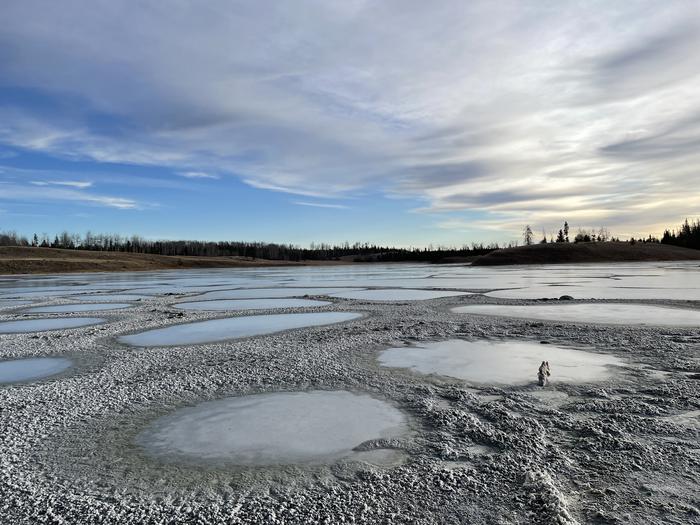Soda lakes, which are dominated by dissolved sodium and carbonate species, could have provided the right conditions for the first cells, according to a study. Early cells may have been composed of RNA inside lipid membranes. But RNA function requires divalent cations such as Mg2+, which disrupt primitive membranes made of fatty acids. The question arises whether the relatively low concentrations of Mg2+ found in soda lakes may have allowed both RNA and membranes to function together. To explore this possibility, Zachary Cohen and colleagues collected water from Last Chance Lake and Goodenough Lake in Canada after seasonal evaporation. These soda lakes each contained ~1 M Na+ and ~1 mM Mg2+ at pH 10. The authors found that spontaneous extension of short RNA primers occurred in lake water at a rate comparable to the rates in standard laboratory conditions. The authors added fatty acids, which could have been available on the early Earth, to the lake water to see if the molecules would assemble into membranes. The membranes formed in dilute water that simulates a rainfall event, and the membranes persisted even when surrounded by concentrated lake water from the dry season. According to the authors, soda lakes on the early Earth could have supported key features of protocell development, with RNA copying and ribozyme activity taking place in the dry season and vesicle formation occurring during the wet season.

Credit: Zachary R. Cohen
Soda lakes, which are dominated by dissolved sodium and carbonate species, could have provided the right conditions for the first cells, according to a study. Early cells may have been composed of RNA inside lipid membranes. But RNA function requires divalent cations such as Mg2+, which disrupt primitive membranes made of fatty acids. The question arises whether the relatively low concentrations of Mg2+ found in soda lakes may have allowed both RNA and membranes to function together. To explore this possibility, Zachary Cohen and colleagues collected water from Last Chance Lake and Goodenough Lake in Canada after seasonal evaporation. These soda lakes each contained ~1 M Na+ and ~1 mM Mg2+ at pH 10. The authors found that spontaneous extension of short RNA primers occurred in lake water at a rate comparable to the rates in standard laboratory conditions. The authors added fatty acids, which could have been available on the early Earth, to the lake water to see if the molecules would assemble into membranes. The membranes formed in dilute water that simulates a rainfall event, and the membranes persisted even when surrounded by concentrated lake water from the dry season. According to the authors, soda lakes on the early Earth could have supported key features of protocell development, with RNA copying and ribozyme activity taking place in the dry season and vesicle formation occurring during the wet season.
Journal
PNAS Nexus
Article Title
Natural soda lakes provide compatible conditions for RNA and membrane function that could have enabled the origin of life
Article Publication Date
19-Mar-2024





